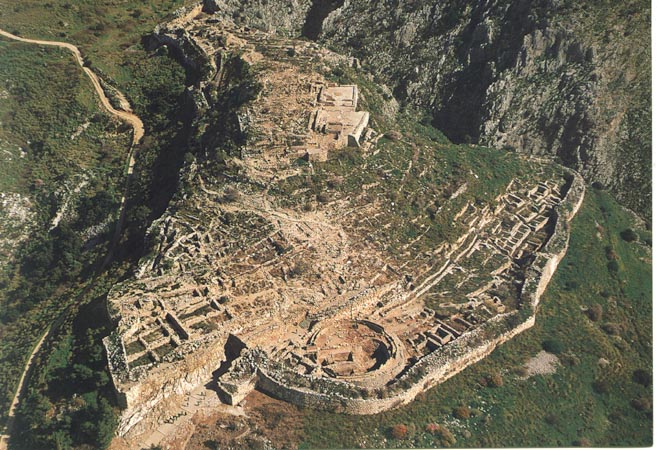Cuando hablamos de la Grecia micénica, debemos especificar que los datos de los que disponemos para poder reconstruir la vida de aquellos griegos son en la mayoría de los casos insuficientes. Uno de los soportes imprescindibles para llevar a cabo dicha reconstrucción son las tablillas en Lineal B, además de la arqueología, aunque ésta última aún no ha desvelado todos los detalles que quisiéramos por el momento.
Por el contrario, en Grecia, un velo impenetrable separa las fragmentarias tablillas de los documentos más completos de la época histórica; durante los siglos que siguieron al eclipse de la civilización micénica, el recuerdo de las formas de vida anteriores se fue oscureciendo hasta desvanecerse o, si sobrevivió en la memoria popular, fue sufriendo transformaciones y confusiones. Hay que tener en cuenta que las tablillas nos hablan de la "contabilidad" de los palacios micénicos, y por ello, podemos, aunque superficialmente, reconstruir grosso modo la vida en estos centros de la Grecia arcaica. Pero muchas de las conclusiones que se extraen de las tablillas, a veces, no disponen de la confirmación necesaria por parte de la arqueología.
Cuando Evans trabajaba a principios del siglo pasado en las excavaciones de Creta, no distinguía en un primer momento entre el elemento minoico y el elemento micénico. Entonces se pensaba que, lo que hoy por consensu omnium se consideran dos pueblos diferenciados, no era sino la misma cosa.
Schliemann, no tuvo la menor duda de que había desenterrado una dinastía griega, y en su famoso telegrama al rey de Grecia dijo que había contemplado el rostro de uno de los antepasados del rey, aludiendo a la máscara de Agamenón encontrada en en círculo de Micenas. Pero otros jueces, más académicos, no estaban tan seguros, y en una ocasión se invocaron teorías de dominación extranjera para explicar el precoz esplendor de Micenas a tan gran distancia de la Grecia histórica. Pudiera pensarse que la comprobación de que la lengua de sus cuentas era el griego ha puesto fin a toda polémica en este punto. Pero la lengua de la contabilidad no es siempre la misma de los que la llevan. Un rey inglés en la Edad Media tenía secretarios para escribir en latín. Pero en los casos que conocemos, la lengua en cuestión es una lengua literaria dominante, y sustituida por ella es una lengua local, de difusión restringida y a menudo carente de ortografía adecuada. Si el griego fue adoptado por extranjeros como lengua escrita, como lo fue en el Egipto helenístico, esto quiere decir que el griego era ya una lengua literaria dominante; conclusión que, según las pruebas que conservamos, resulta absurda.
La mejor refutación de estas teorías es la existencia de gran número de nombres propios de personas evidentemente griegas. Los 700 años aproximadamente que median entre la llegada de los griegos y las tablillas de Pilos constituyen un período de tiempo suficiente para permitir la absorción de los habitantes prehelénicos.
La presencia de griegos en Cnosos sigue siendo en cierto modo una perturbación. Aunque algunos profesores y arqueólogos como Wace han demostrado que existen estrechos lazos entre Cnosos y el continente en el período que precedió a la caída del Palacio de Cnosos; e incluso proponían lazos del continente sobre Creta y no a la inversa. Por ejemplo, son numerosas las tablillas encontradas en Pilos que hablan de asuntos militares y navales.
Las causas del derrumbamiento de la civilización micénica constituyen un problema que ha intrigado a los especialistas durante tres cuartos de siglo. Hay motivos para creer que el último acontecimiento fue una invasión de griegos dorios procedentes de la región inhóspita del noroeste. Pero no hay pruebas que lo confirmen. Y el desciframiento de las tablillas tampoco nos ha dado la solución.
Lo que si sabemos cierto, es que algo oscuro acaeció en aquellos palacios, tanto en las regiones continentales como en Creta, y después, hubo silencio.










